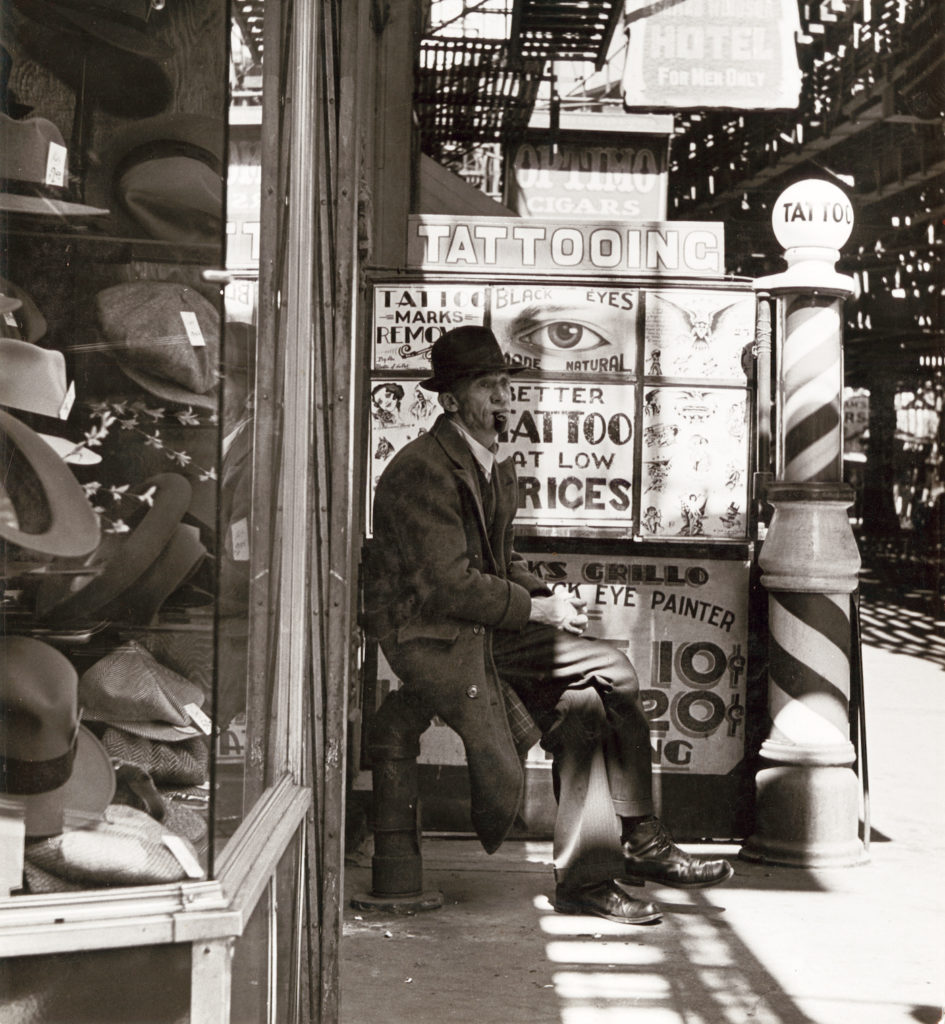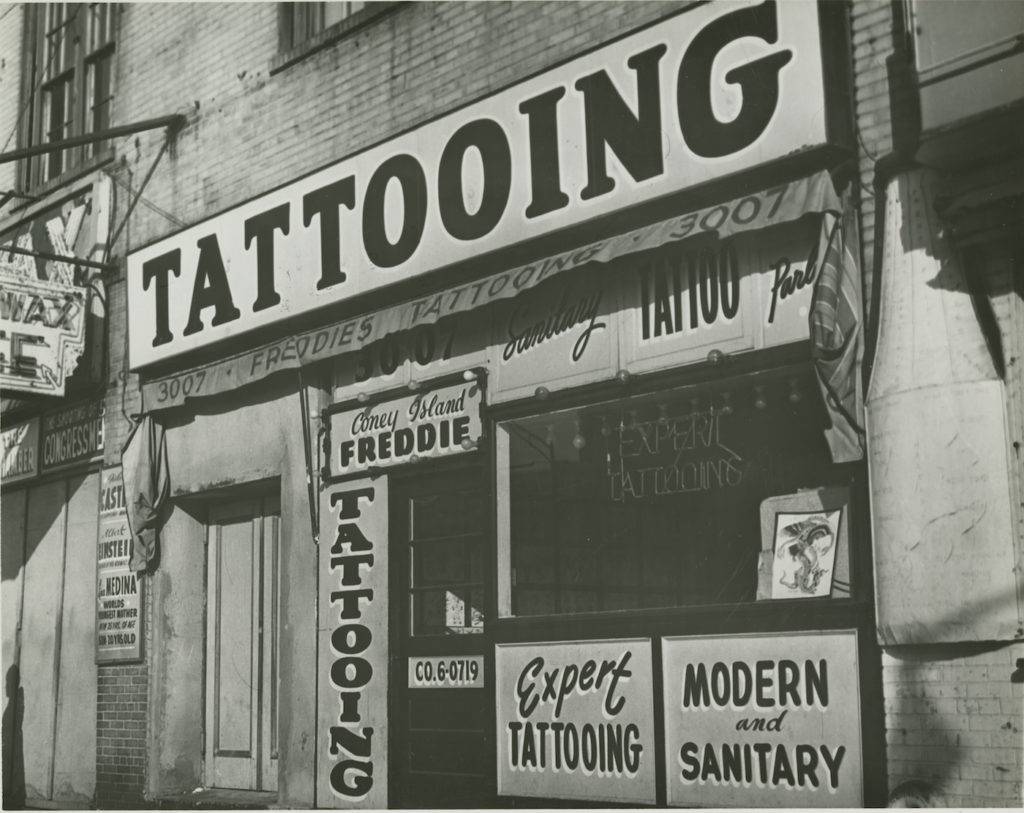
Tattooing in New York has been a sideshow attraction, a banned underground practice, and an elite society trend. Performers in the early 1900s Bowery dime museums boasted wild tales of forced tattoos at the hands of “Indians,” while in the late 19th century, they were a fad with fashionable ladies, who got Japanese-style dragons and flowers inked in discreet places. Thomas Edison pioneered an electric pen in 1875, supposedly trying out some dots on himself in the process (although it was intended for reproducing documents). Then, just under a century later, in 1961, the city’s health department declared that it was “unlawful for any person to tattoo a human being.” The rule referenced several cases of Hepatitis B, but was likely meant to smooth the city’s rough edges ahead of the 1964 World’s Fair — never mind that the fully tattooed Betty Broadbent had been a star in the beauty pageant of the 1939 World’s Fair. Tattooed New York at the New-York Historical Society explored this complex history chronologically, emphasizing Gotham’s centrality in the development of the medium.
Later, in the Civil War era, tattoos became popular with soldiers as a way of posthumous identification, a practice taken up by the New York–based Martin Hildebrandt. (He went on to ink Nora Hildebrandt, believed to be the first professional tattooed woman.) After Tattooed New York reaches the turn of the 20th century, its timeline gets tighter, and the individual characters that propelled the art, more distinct. Some tattoo artists, such as Samuel O’Reilly, inventor of the electric rotary pen and the first to open a mechanized tattoo shop in 1898, concentrated around the Bowery, while others gathered in Coney Island. Japanese artists arriving in the city introduced new inks and styles, with rice paper stencils giving way to acetate in the early 1900s. Sometimes a phonograph needle was used to trace a pattern, until the photocopier emerged in the 1980s.
Many of the early artists and their customers were men, yet Tattooed New York includes a series of cabinet cards of influential tattooed ladies. Some, including Irene Woodward, who had over 400 designs on her skin, told elaborate stories of being forcibly inked “by Indians” — a mythical story that went back to the 1850s and Olive Oatman, whose face tattoos, a mark of her status among the Mohave people, were sensationalized. Other women were tattoo artists themselves, like Trixie Richardson, who gave thousands of 1920s women their own subtle butterflies and forget-me-nots.
The 1961 tattoo ban, which endured until 1997, sent the parlors underground. On view is a 1962 window shade of flash designs from Tony D’Annessa’s tattoo shop on West 48th Street; he could quickly pull it up, as if he were the owner of a Prohibition speakeasy hiding its booze. During the time of the ban, tattoos also paradoxically started to get mainstream appreciation, appearing in exhibitions and supporting the public’s fascination with the art.


